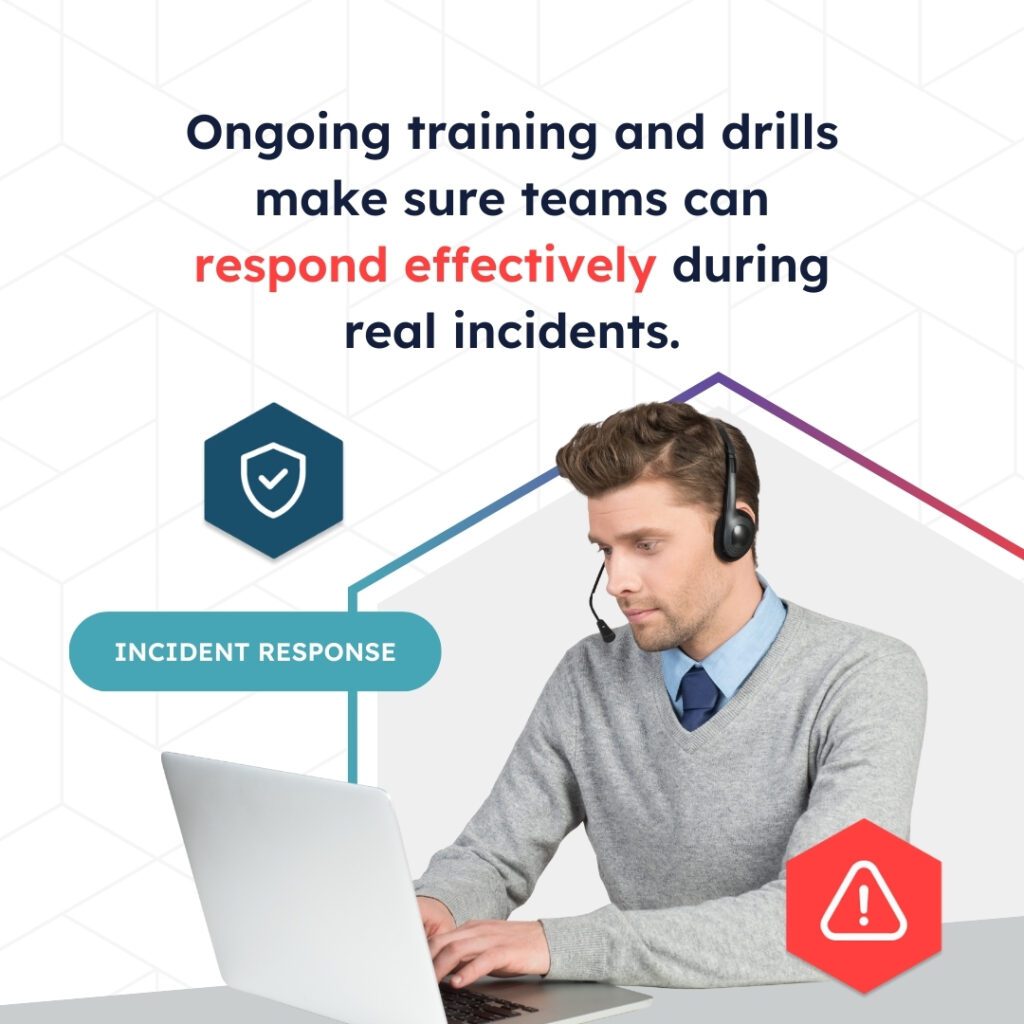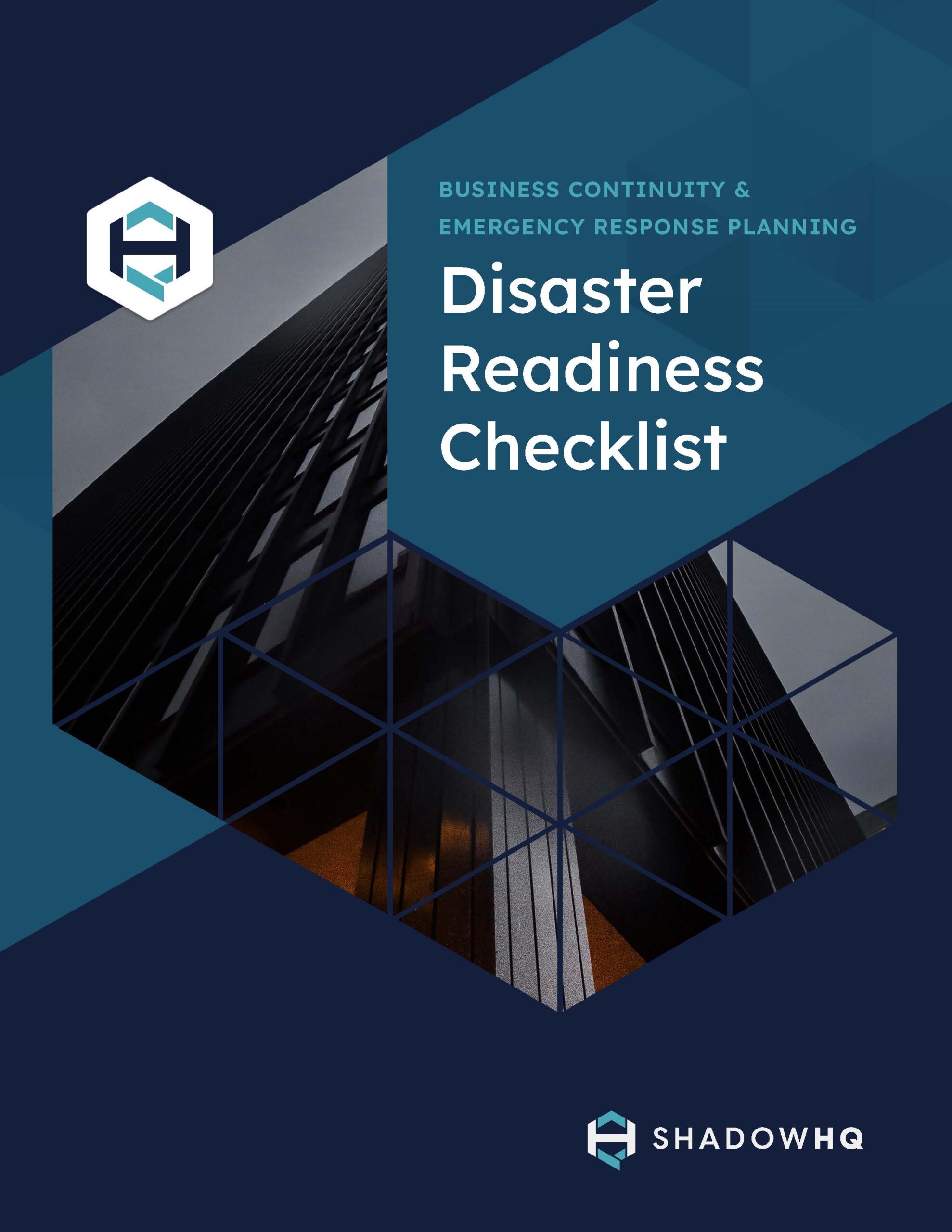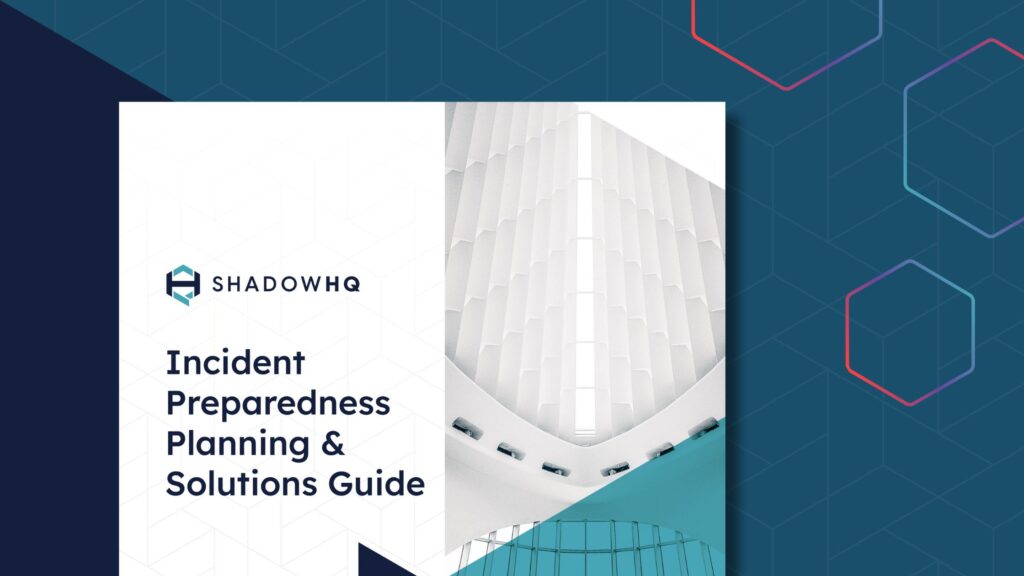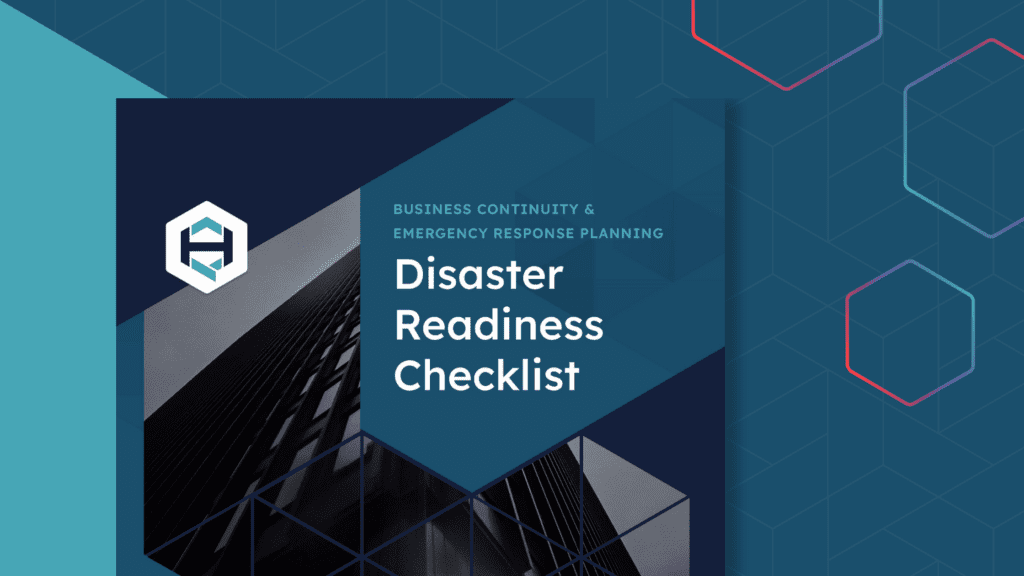Top Incident Response Best Practices for Effective Security Management
Incident Response Best Practices: How to Apply NIST Recommendations
Organizations of all sizes face a new world of evolving threats and business-impacting scenarios. A strong incident response plan is critical for businesses to thrive, as it enables them to minimize and recover from a successful cyber attack or system failure.
The National Institute of Standards and Technology (NIST) offers extensive guidelines for incident response best practices, which can significantly enhance an organization’s ability to manage and recover from cybersecurity incidents. The institute’s recommendations are outlined in NIST Special Publication 800-61 Revision 2 and provide a structured approach to preparing for and responding to incidents.
An IBM study found that the average data breach cost in 2023 was $4.45 million, a 15.3% increase compared to the 2020 report. The increasing cost of breaches requires increasingly effective responses to minimize this cost.

Following NIST’s best practices lays the foundation for you to build an effective incident response plan, implementing specific processes and technologies that make sense for your organization.
So, let’s explore how you can effectively apply these best practices to keep your organization operational.
Understanding Incident Response
Incident response is a critical component of an organization’s cybersecurity strategy. It refers to the processes and policies used to respond to and manage security incidents, such as cyber attacks, data breaches, or other types of security threats. The goal of incident response is to minimize the impact of the incident, contain the damage, and restore normal business operations as quickly as possible.
Effective incident response requires a well-planned and structured approach. This includes having a clear incident response plan, a trained incident response team, and established incident response procedures. Incident response frameworks, such as those provided by NIST or SANS, offer a structured approach to incident response and help organizations develop a comprehensive incident response plan. By following these frameworks, organizations can ensure they are prepared to handle security incidents effectively and efficiently.
How to Enact NIST Best Practices
NIST’s best practices help save organizations from starting from scratch when developing incident response plans and establishing an effective incident management process. So, let’s explore how you can follow NIST’s best practices to create or refine an effective incident response plan.
Develop Written Policies and Plans
Preparation and planning are the foundation of an effective incident response. According to NIST, this should take the form of developing written policies. While your policy may not know the granular, specific details in some areas, starting with a high-level incident response policy helps inform the rest of the best practices.
An ideal policy defines the incident response team’s scope, goals, and responsibilities, aligning with the organization’s overall security strategy and business objectives. An effective policy should also outline the roles and responsibilities of incident responders, ensuring that each team member knows their specific duties during an incident.
Additionally, creating and maintaining incident response plans is vital. These plans should cover different incidents, such as malware infections, data breaches, and denial-of-service attacks. An effective response plan will detail step-by-step identification, reporting, and response procedures.
Build the Incident Response Team
Once the policy is in place, the next step is establishing a dedicated incident response team with clearly defined roles to ensure effective incident management.
An effective team should include members with expertise in IT, cybersecurity, legal, communications, and business continuity. This combination of cross-departmental experts is necessary to effectively handle all the moving pieces of an incident, ranging from minor to severe incidents.
Provide training on specific incident response plans and solicit feedback from the team; they likely have unique insights to bring to the table.
Additionally, regular drills are necessary to keep the team aware of the latest threats and understand their roles in any given scenario. Ongoing training and drills make sure teams can respond effectively during real incidents.
Incident Response Framework
An incident response framework is a structured approach to managing and responding to security incidents. It provides a set of guidelines and procedures for incident response teams to follow, ensuring that incidents are handled consistently and effectively. Incident response frameworks typically include the following phases:
Preparation: This phase involves preparing for potential incidents by developing an incident response plan, training incident response teams, and establishing incident response procedures.
Identification: This phase involves identifying and detecting security incidents, such as monitoring network traffic for suspicious activity.
Containment: This phase involves containing the incident to prevent further damage, such as isolating affected systems or networks.
Eradication: This phase involves removing the root cause of the incident, such as deleting malicious files or uninstalling compromised software.
Recovery: This phase involves restoring systems and data to a known good state, such as rebuilding systems or restoring data from backups.
Lessons Learned: This phase involves reviewing the incident and identifying areas for improvement, such as updating incident response procedures or providing additional training to incident response teams.
By following these phases, organizations can ensure a comprehensive and effective incident response process, minimizing the impact of security incidents and improving their overall cybersecurity posture.
Implement Tools for Detection and Analysis
Knowing when cyber incidents occur as quickly as possible is crucial for mounting a rapid response. Advanced monitoring systems should be implemented to detect potential security incidents and provide real-time alerts for suspicious activities and anomalies.
Establish clear procedures for identifying and reporting incidents to help streamline the response process. These procedures include defining what constitutes an incident, who should be notified, and how incidents should be documented.
Intrusion detection systems, security information and event management (SIEM) systems, and forensic analysis tools are essential for effective incident detection, analysis, and response. These tools should be regularly updated and maintained to ensure they are always ready for use. Tools that offer out-of-band communications and document storage also go far in improving resilience.
When an incident is detected, conducting an initial analysis to understand the incident’s nature and scope is critical. This involves examining logs, network traffic, and behavior to pinpoint the source and impact of the incident. Prioritizing incidents based on severity and potential impact ensures that the most critical threats receive immediate attention.


Training and Exercises
Training and exercises are critical components of an effective incident response program. Incident response teams must be trained on incident response procedures and protocols, as well as on the use of incident response tools and technologies. Regular exercises and simulations can help incident response teams practice their skills and identify areas for improvement.
Training and exercises can include:
Tabletop exercises: These are simulated exercises that involve incident response teams responding to a hypothetical incident.
Live exercises: These are simulated exercises that involve incident response teams responding to a real-world scenario.
Online training: This can include online courses, webinars, and other types of online training.
Incident response drills: These are regular drills that involve incident response teams responding to a simulated incident.
By incorporating these training methods, organizations can ensure their incident response teams are well-prepared to handle real-world security incidents, leading to more effective incident response and improved organizational resilience.
Containment, Eradication, and Recovery
Once security breaches have been detected and analyzed, the next steps are to contain their impact, eradicate the root cause, and recover from them. Having pre-planned, scenario-based containment strategies is essential to prevent further damage.
Every incident will have different steps, including isolating affected systems, blocking malicious traffic, or deactivating compromised accounts. Depending on the severity of the incident, containment can be short-term or long-term.
Eradicating the threat involves identifying and removing the root cause of the incident. This might include cleaning malware from infected systems, patching vulnerable software, or conducting a thorough investigation to eliminate all traces of the threat.
Once the threat has been eradicated, the focus shifts to restoring affected systems and data from backups. It’s vital to verify the integrity of restored data and validate that systems are fully operational before resuming normal operations.
Containment, Eradication, and Recovery
Once security breaches have been detected and analyzed, the next steps are to contain their impact, eradicate the root cause, and recover from them. Having pre-planned, scenario-based containment strategies is essential to prevent further damage.
Every incident will have different steps, including isolating affected systems, blocking malicious traffic, or deactivating compromised accounts. Depending on the severity of the incident, containment can be short-term or long-term.
Eradicating the threat involves identifying and removing the root cause of the incident. This might include cleaning malware from infected systems, patching vulnerable software, or conducting a thorough investigation to eliminate all traces of the threat.
Once the threat has been eradicated, the focus shifts to restoring affected systems and data from backups. It’s vital to verify the integrity of restored data and validate that systems are fully operational before resuming normal operations.
Compliance and Regulatory Requirements
Incident response is subject to various compliance and regulatory requirements, such as HIPAA, PCI-DSS, and GDPR. Organizations must ensure that their incident response program complies with these requirements, which can include:
Incident response planning: Organizations must have a comprehensive incident response plan in place.
Incident response training: Incident response teams must be trained on incident response procedures and protocols.
Incident response reporting: Organizations must report security incidents to regulatory bodies, such as the Federal Trade Commission (FTC).
Incident response documentation: Organizations must maintain detailed documentation of security incidents, including incident response plans, procedures, and reports.
By adhering to these compliance and regulatory requirements, organizations can ensure they are meeting legal obligations and maintaining a robust incident response program that protects sensitive data and minimizes the impact of security incidents.
Post-Incident Activity
Once the security incident is fully resolved, the final step is post-incident activities. These activities focus on learning from the incident and improving future response efforts. A detailed review of the incident and the response efforts is necessary to improve future incident responses. All members of the incident response team and relevant stakeholders should be involved to offer their perspectives and insights.
The goal of post-incident review is to identify what went well and what didn’t during the incident response. The team and managers will evaluate several aspects of the response, including the effectiveness of detection and containment measures, the speed and accuracy of the response, and the clarity of communication throughout the incident.
The insights gained from this review should be used to update and improve response plans, training programs, and communication strategies. Continuously improving your incident response capability ensures your organization remains resilient against new and emerging threats.
Beyond specific post-incident reviews, periodically review and update your overall incident response strategy, incorporating lessons learned from previous incidents and staying informed about the latest threats and best practices in cybersecurity.
Continuous Improvement
Continuous improvement is critical to an effective incident response program. Incident response teams must regularly review and update incident response procedures and protocols to ensure that they are effective and efficient. This can include:
Incident response plan review: Incident response teams must regularly review and update the incident response plan to ensure that it is comprehensive and effective.
Incident response procedure review: Incident response teams must regularly review and update incident response procedures to ensure that they are effective and efficient.
Incident response training review: Incident response teams must regularly review and update incident response training to ensure that it is comprehensive and effective.
Incident response tool review: Incident response teams must regularly review and update incident response tools and technologies to ensure that they are effective and efficient.
By committing to continuous improvement, organizations can ensure their incident response capabilities remain robust and adaptive to new and emerging threats, ultimately enhancing their overall cybersecurity posture and resilience.
Equip Your Teams with Out-of-Band Incident Response with ShadowHQ
Applying NIST incident response best practice recommendations involves a comprehensive approach that includes robust policies and plans, an effective team, detection and analysis, containment, eradication and recovery, and post-incident activities.
Developing robust policies, assembling a skilled response team, investing in the right tools, and continuously improving response strategies allow businesses to manage and recover from cybersecurity incidents effectively. As a result, you’ll mitigate the impact of incidents and enhance organizational resilience, ensuring long-term security and stability.
Communicating and collaborating effectively throughout an incident is critical to mounting a rapid, effective response. Otherwise, working as a team and communicating effectively with stakeholders can be challenging.
ShadowHQ is a leading provider of out-of-band communications, so your incident response plan can always be securely communicated and collaborated on. Ready to enhance your communication protocols with our secure bunker? Schedule a demo today to learn more about how we can help.
EWEBINAR
Experience the ShadowHQ platform
Walk through a cyber breach scenario in a 15 minute demo.


GUIDE DOWNLOAD
Disaster Readiness Checklist
When an emergency happens, every minute counts.



